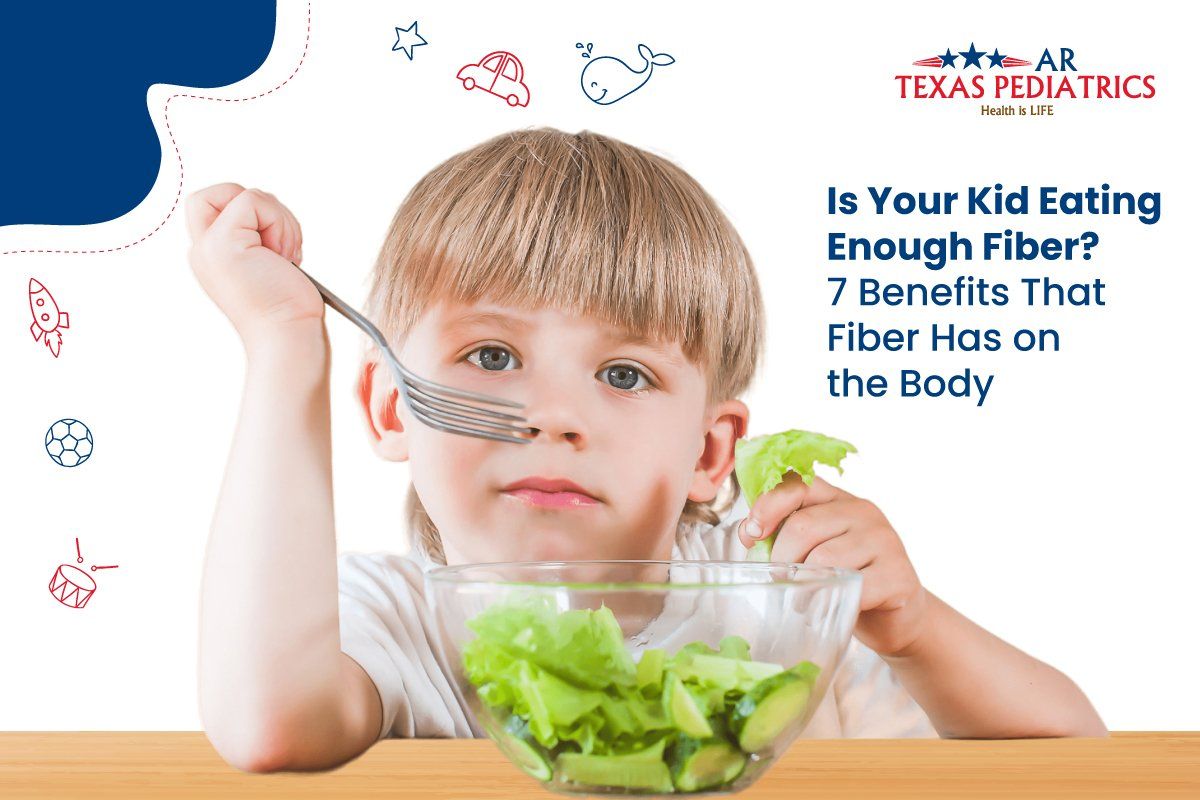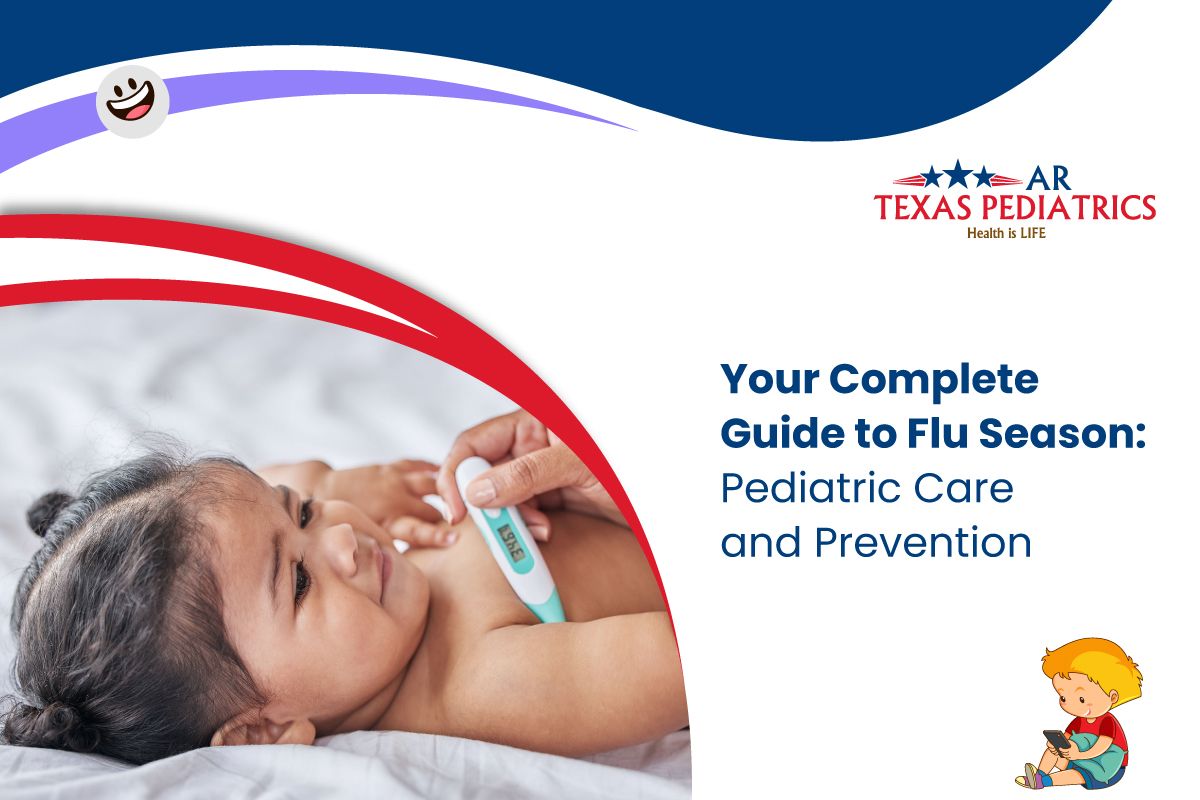
PHONE & EMAIL
Is Your Kid Eating Enough Fiber? 7 Benefits That Fiber Has on the Body

Fiber is probably not the first thing you look for on a food nutrition label. You would probably look for added sugars or total carbohydrates, especially if your child has diabetes. However, you should know that fiber dramatically impacts your child's growth and development.
Here's how to determine if your child is eating enough fiber and why it's essential.
How Much Fiber Per Day Should Your Child Consume?
If you question
how much fiber I should give my child in a day, the recommended daily kids' fiber and teens are as follows:
- Children ages 1 to 3 years: 14 grams (g)
- Girls 4 to 8 years: 16.8 g
- Boys 4 to 8 years: 19.6 g
- Girls 9 to 13 years: 22.4 g
- boys 9 to 13 years. 25.2
- Girls 14 to 18 years: 25.2 g
- Boys 14 to 18 years: 30.8 g
The 7 Benefits of Fiber
Why is fiber important? Fiber is essential because it is suitable for your child’s health. Here are the seven benefits to encourage why fiber is necessary for your children
1. Good for Fighting Children’s Constipation
Constipation is a common problem among toddlers and children. It is also a leading cause of stomach aches. Fiber is your friend if you want to help your child stay regular in a natural way.
Why is fiber good for your child?
Fiber can aid in preventing unpleasant digestive problems. Each form of fiber, including soluble, insoluble, and viscous varieties, can contribute to the regularity and health of your stools.
Further, add extra fiber to your child's diet
gradually over a few weeks and ensure your child drinks more liquids.
Adding fiber to your child's meal should be fun, not a turn-off. Fiber foods for toddlers' constipation include apples, pears, beans, oatmeal, oranges, ripe bananas, whole-grain bread, and popcorn.
2. Nourishes Good Gut Bacteria
If you're worried about what to give your child for a
healthy gut, you should provide them with fiber.
In the human body, the
cells are outnumbered by bacteria. Most bacteria are found in the stomach, especially in the large intestine. The term
"gut flora" also refers to these bacteria in the gut.
Moreover, your child's digestive system and some bacteria benefit from one another. By giving the bacteria food, a place to live, and a secure environment. In exchange, they
do a few tasks that the human body cannot complete independently.
3. Assists in Lowering High Blood Pressure
Obesity-related hypertension is quite common in children in the United States. Since this condition can cause heart disease or a stroke, you should know that fiber is suitable for your child’s heart.
New methods for controlling blood pressure have emerged. It is through creating fresh
bioactive food ingredients.
Fiber has been linked to preventing several cardiovascular diseases and disorders.
The primary soluble fiber found in oat grains,
beta-glucan, was first associated with a decline in plasma cholesterol.
4. Fiber Keeps Your Child Feeling Fuller for a More Extended Time
Your child will eat less if they consume high-fiber foods instead of low-fiber meals. High-fiber foods are more filling than low-fiber meals, so your child will eat less and feel fuller for an extended time.
Moreover, high-fiber foods take longer for the body to digest, making your child feel
full for longer. Also, high-fiber foods contain fewer calories per unit of food.
Additionally, your child will feel fuller between meals and snacks if you include fiber in their meals and snacks. Another health benefit of fiber is that it helps
curb binge eating, which protects them from obesity which is
one of its causes.
5. Lowers Blood Sugar
Type 2 Diabetes is
prevalent in children, but proper health management can prevent this disease.
Research suggests that increasing fiber in the diet can prevent type 2 diabetes.
Moreover,
Soluble fiber also helps regulate blood sugar levels.
According to a
study, Beta-glucan-enriched bedtime snacks may flatten nocturnal blood glucose curves in diabetic children before midnight.
6. Balances Cholesterol Levels
Children can have high cholesterol caused by what they eat or other health problems. Nevertheless, high cholesterol can be leveled with the help of fiber in their diet.
This unique property,
viscous fiber, can help maintain optimal cholesterol levels, benefiting heart health. When dissolved in water can also help lower your cholesterol.
Secondly, soluble
fiber can also help lower LDL cholesterol levels. LDL cholesterol is the type that can build up in blood vessels and cause
atherosclerosis. The arteries become rigid and narrow, making blood flow difficult.
Further, the primary soluble fiber in oats, oat-Bglucan (OBG), is thought to be
the primary active ingredient in oats that lowers cholesterol.
7. Improves Bone Health
Your child can benefit from soluble fiber since it helps strengthen their bones. It has been
demonstrated that some kinds of soluble fiber, or "prebiotics," boost the bioavailability of minerals like calcium in the diet.
Further, another
study also found that dietary fiber improved young children's and adolescents' ability to absorb calcium and develop healthy bones.
What Foods Provide Fiber?
Since you have already learned about the benefits of fiber, have you wondered if your kid is eating enough fiber? You should find out what foods contain fiber so you can include it in your child's meals.
Additionally, evaluating a nutrition label is critical in locating high-fiber foods. A decent fiber source contains
2.5-4.9 grams of fiber per serving, while a great source has 5 grams or more per serving.
Here are some good food sources of fiber
that are ideal for including in your child’s diet:
- Haas avocados - 1/2 avocado = 5g fiber
- Berries - 1 cup = 8g fiber
- Whole-wheat pasta - 1 cup cooked = 7g fiber
- Pears - 1 medium pear = 6g fiber
- Chia seeds - 2 tablespoons = 10g fiber
- Barley - 1 cup cooked = 6g fiber
- Chickpeas - 1/2 cooked = 6g fiber
- Lentils - 1/2 cup cooked = 8g fiber
- High-fiber snacks like almonds, trail mix, granola bars, okra, carrots, celery, and sweet potatoes
How Can You Encourage Your Child to Eat More Fiber?
Here are some
fun ideas you can try and copy to make fiber look appealing to your child.
- Oats are a great source of soluble fiber. There are many ways to add them to your child's diet. You can put them in smoothies, homemade cookies, granola bars, and energy bites.
- You can sprinkle flaxseed and chia seeds on cereal, smoothies, salads, or smoothies.
- Thank goodness, children like popcorn. Popcorn has a lot of fiber and is very filling, so it's an excellent choice for a snack or a treat after school.
- Sweet potatoes look good because of their bright color. Keep the skins on to get the most fiber out of them. Most children will try baked sweet potato fries, especially if they are sufficiently crisp.
- When compared to other vegetables, carrots are kids' favorite. Serve "rainbow carrots" with ranch dressing, hummus, spinach-artichoke dip, or guacamole. Carrots may also be shredded and added to tomato sauce, sloppy Joe mix, taco meat, and even baked products such as this tropical carrot cake.
- Apples are a great source of fiber; most kids love them when the skin is left on. Dip apple slices in yogurt or peanut butter to make them more attractive.
- Beans and peas can be added to the menu in many tasty ways. Bean burger chili, Boston baked beans, and even grilled bean burgers will be a big favorite with your child.
Further, keeping a food diary in which you note the fiber content can help determine how much fiber you consume.
Talk to Our Highly Trained Professionals
If you are searching for a "pediatrician near me" or "a pediatrician in Houston, Texas," look no further than our pediatricians at
AR Texas Pediatrics.
Improve your child's health and well-being by taking advantage of our Well Child service with a nutrition assessment and dietary guidance. Our pediatricians will provide a routine check-up during each visit. Our priority is your child's health. Our ultimate goal is for them to have a healthier life.
Click on the highlighted link or call 281-484-7619 for an appointment.

Grow Your Career with Us
We offer exceptional pediatric services across Houston. Be part of our dedicated team and help foster healthier futures for children.
Quick Links
Services
Services
Address:
HOUSTON:
Quick Links
Services
Contact Info:
AR Texas Pediatrics | All Rights Reserved












